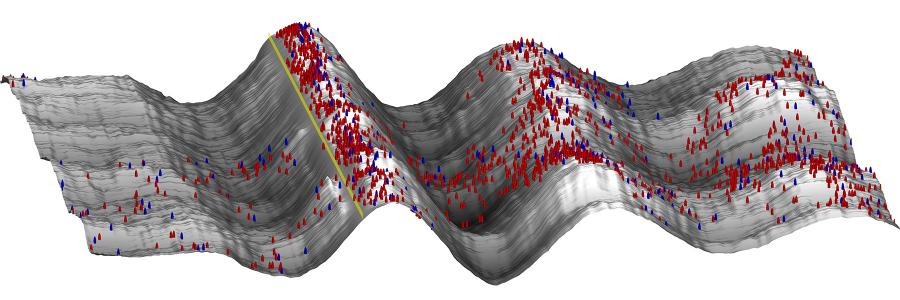
Arthur-Ervin Avramiea, Richard Hardstone and colleagues from the team of Klaus Linkenkaer-Hansen (INF) publish in eLife that pre-stimulus phase and amplitude regulation of stimulus processing is maximized when neuronal networks operate in the critical state.
Why do we sometimes hear a quiet sound from across the room, but other times we completely miss someone calling our name when they are standing right next to us? Our perception of the world depends not only on the properties of the stimulus, but also on the current functional state of the brain. Empirical evidence indicates that the amplitude and phase of neuronal oscillations reflect fast-changing functional states with the power to determine whether stimuli are consciously perceived or not; however, it was never studied whether these filtering properties depend on additional mechanisms.
A new study shedding light on the pre-requisites for state-dependent responses has been published in eLife jointly led by Arthur-Ervin Avramiea and Richard Hardstone from the Neuronal Oscillations and Cognition group of Klaus Linkenkaer-Hansen (PI in the Department of Integrative Neurophysiology). Here, they used a model of neuronal oscillations (CROS)
previously developed in the group, which exhibits a phase-transition from weak short-lived oscillations to strong persistent oscillations as the excitation/inhibition ratio is increased. Poised between these regimes is the “critical point” where excitation and inhibition are in balance, and the current activity carries echoes of past activity tens of seconds in the past, whereas away from the critical point, dependence on past activity is quickly lost.
In this study, they show that the ability of networks to regulate stimulus response based on pre-stimulus phase or amplitude requires near-critical dynamics, whereas away from the critical state networks show more stereotyped responses. Thus, the brain may bring its dynamics close to the critical state whenever such network versatility is required, or away from the critical state when more reliable responses are required (e.g., when deeply focused). These results could shed light on conflicting results in the literature where phase-dependent responses are only sometimes observed, and potentially explain sensory or attentional deficits through the inability of the network to reach a certain excitation/inhibition state. Linkenkaer-Hansen adds: “I’m particularly excited about this paper because we show how influential theories of the functional significance of neuronal oscillations implicitly depend on critical brain dynamics. This is yet another confirmation of the broad relevance of the criticality framework that we have developed for more than 20 years”.
The study was financed by grants from NWO Exact Sciences and NWO Social Sciences, and is published as:
Arthur-Ervin Avramiea*, Richard Hardstone*, Jan-Matthis Lueckmann, Jan Bim, Huibert D. Mansvelder, Klaus Linkenkaer-Hansen. Pre-stimulus phase and amplitude regulation of phase-locked responses are maximized in the critical state.
(* Joint First Author)
eLife 2020;9:e53016
Twitter

Figure: (A) Critical dynamics of neuronal oscillations occur along the excitation-inhibition balanced regime indicated by the black line. Stimulation experiments show that networks show maximum versatility at criticality as indicated by maximum Dynamic Range (B), as well as maximal pre-stimulus Amplitude ( C ) and Phase (D) regulation of stimulus responses.